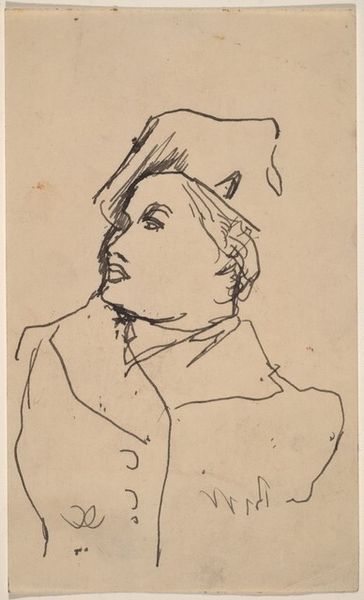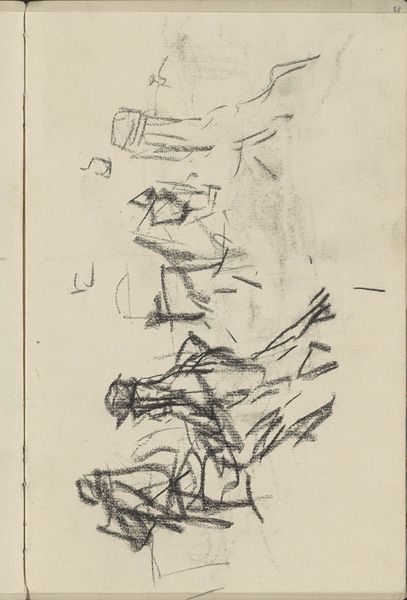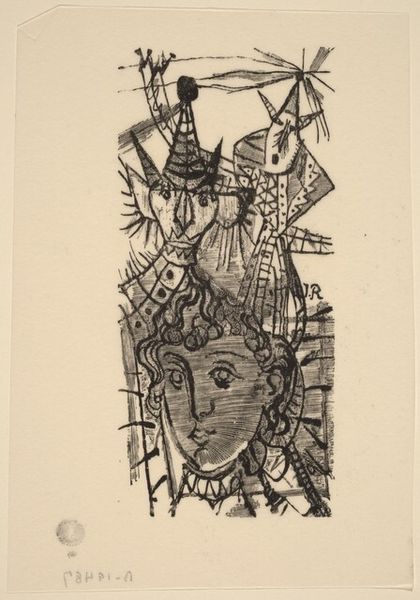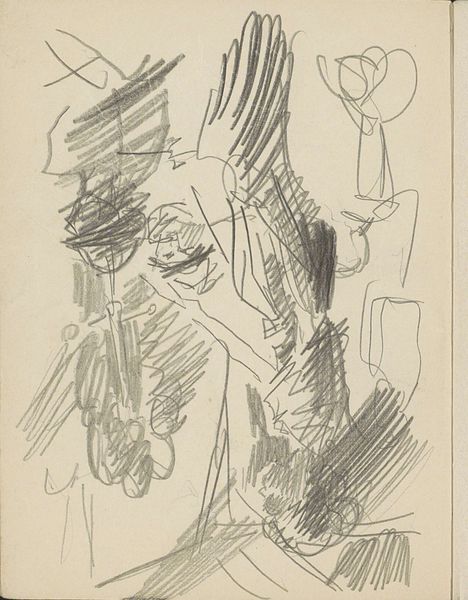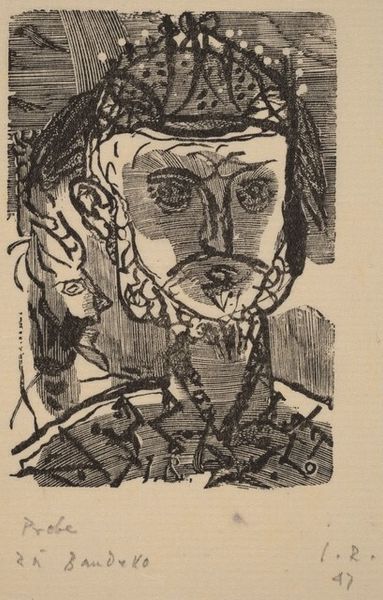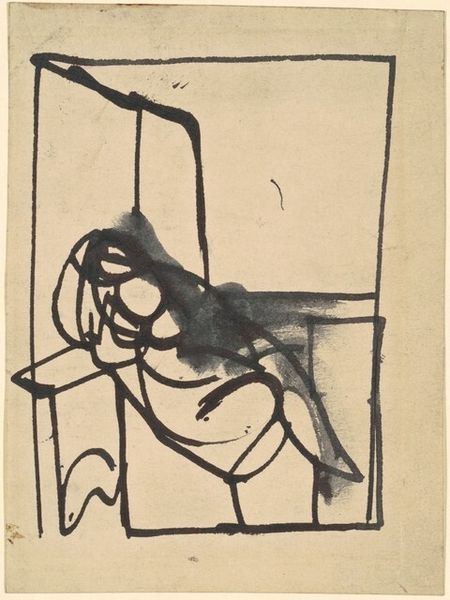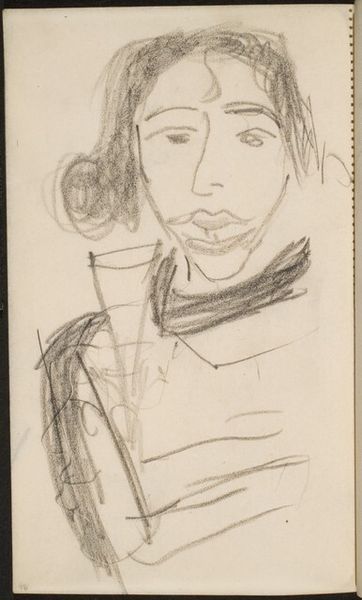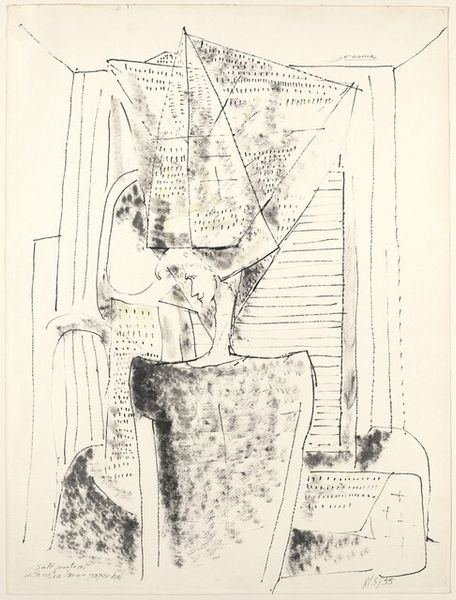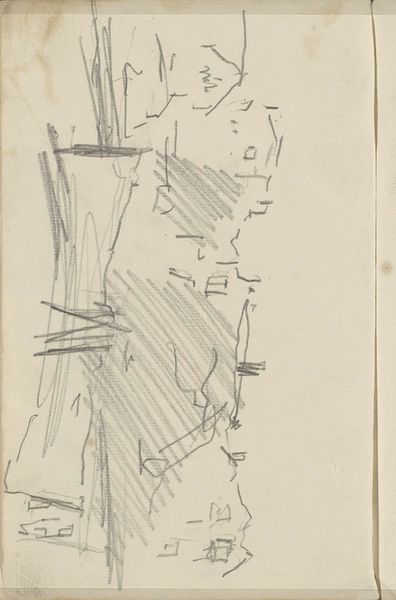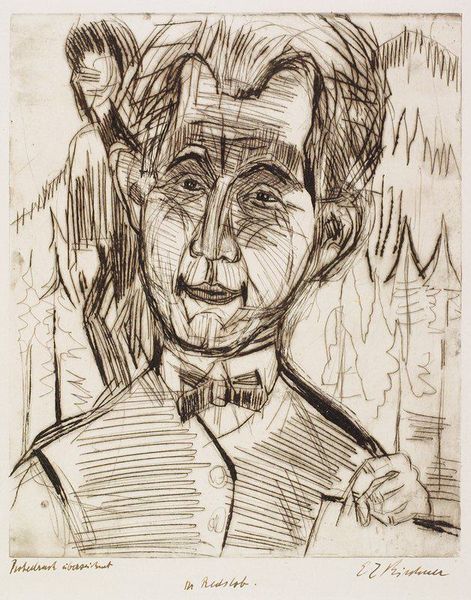
drawing, print, etching, ink
#
portrait
#
drawing
# print
#
etching
#
figuration
#
ink
#
line
#
surrealism
Dimensions: image: 14 x 9 cm (5 1/2 x 3 9/16 in.) sheet: 33.1 x 22.5 cm (13 1/16 x 8 7/8 in.)
Copyright: National Gallery of Art: CC0 1.0
Curator: At first glance, it's a fascinatingly peculiar piece. The immediate feeling is a playful but unsettling tension. Editor: Precisely. Let's explore Jiri Balcar's "Absurd Profile," created in 1946 using etching and ink. It’s an example of how figuration can push the boundaries of reality into something almost dreamlike, fitting into the Surrealist art movement. Curator: That stark black ink against the paper’s stark off-white is part of what creates the mood, a strong sense of alienation or existential pondering. There’s something vaguely familiar in the profile itself, and yet utterly bizarre with its odd symbology. I notice the eyes. A triangle? What are we to make of this abstraction, as it floats above the realistic mouth? Editor: The symbolism, definitely. Take that miniature chair perched on his shoulder, or the stick figure seemingly pinned to his jacket. Chairs represent authority or even imprisonment, implying societal burdens weighing down the individual. The stick figure suggests innocence perhaps constrained or abused? It creates a narrative about the modern human condition after all of the upheaval of war, and its effect on the individual psyche. Curator: The hat is interesting as well; stars poking out of it seem almost childlike, juxtaposed against the angular adult facial features and the starkness of the lines themselves. There's a real sense of disjointedness. Is this some visual representation of postwar cognitive dissonance? Editor: Absolutely. But look at the composition too; how the geometric elements create planes within the face, how the crosshatching adds depth in some areas while others remain deliberately flat. These stark choices give it visual interest, but also emphasize the sense of fragmentation. It invites endless readings based on visual experience and interpretation of forms and signs. It's this visual paradox. Curator: So, an image wrestling with identity in a shattered world. Editor: Perhaps, a visual meditation on how we perceive and process the world when what was once solid, breaks. It’s why Balcar’s exploration remains striking today.
Comments
No comments
Be the first to comment and join the conversation on the ultimate creative platform.

